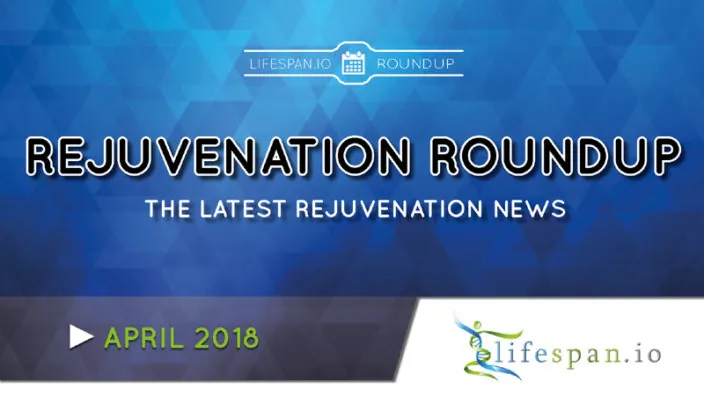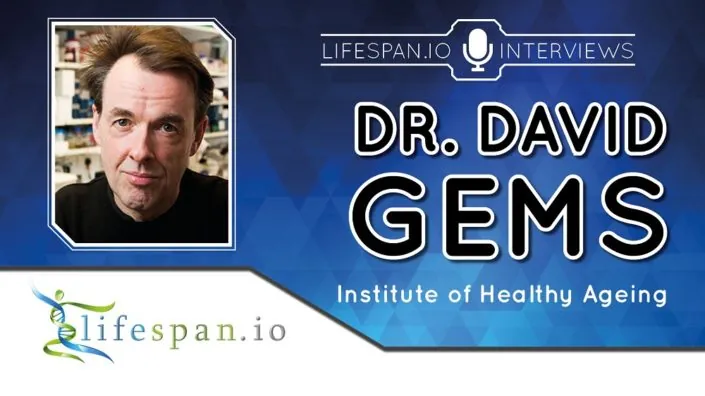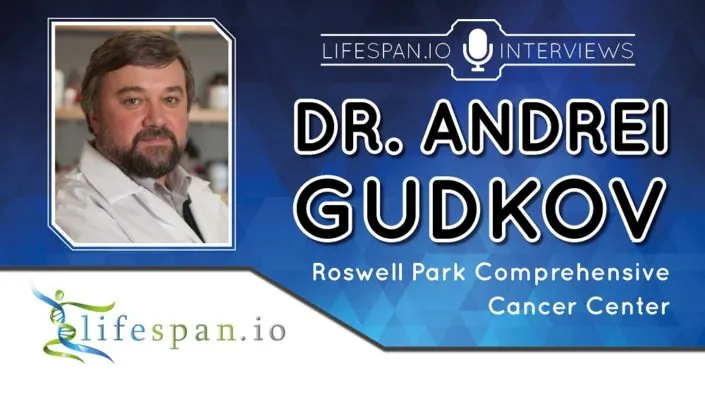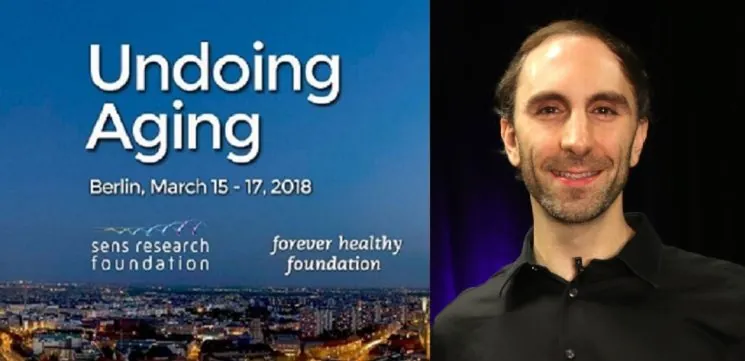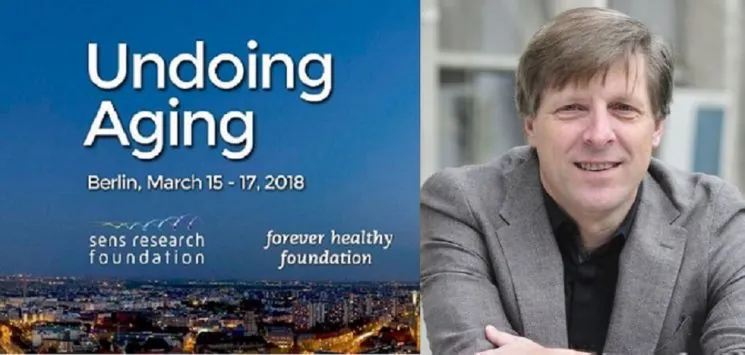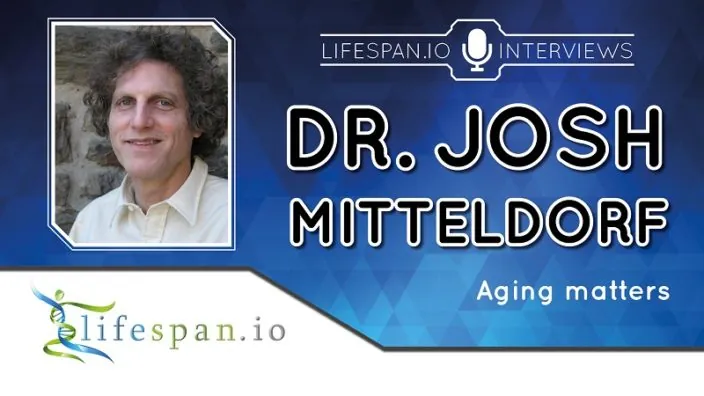Today, we have an interview with Dr. Nichola Conlon, one of the speakers at the Undoing Aging 2018 Conference in Berlin, hosted by the Forever Healthy Foundation and SENS Research Foundation.
Introducing Nuchido
Dr. Conlon is the CEO of Nuchido, a new company that is set to launch later this year and was encouraged in part by four recent breakthroughs in biogerontology, which each showed rejuvenation in mammals [1-9]. These studies, which were all published in leading peer-reviewed scientific journals, showed that rejuvenation of aged animals was possible via different mechanisms of action.
Taken as a whole, these recent results show without question that not only can rejuvenation be achieved in aged mammals, the scientific understanding of aging, and what might be done about it, is far ahead of the common conceptions that rejuvenation is not possible and that aging is a one-way process. Science shows us that nothing could be further from the truth.
Nuchido has set out to translate these advances in aging research into actionable therapies for humans by using a systems pharmacology approach to identify active molecules and combinations that can positively influence the aging processes. This approach is well-suited to the complexity of biological systems, particularly aging.
Unlike traditional pharmacological approaches, which use a one-drug, one-target approach, systems pharmacology addresses the complexity of a living biological network. It uses network impact analysis to identify the combinations of interventions that are most likely to have a significant impact on a biological network. It also uses this system to identify key areas of weakness within a biological network as leads for potential interventions.
Targeting NAD+ as a route to rejuvenation
During her presentation at Undoing Aging 2018, Dr. Conlon talked about how her company has used this approach. Her company identified the decline of NAD+ as being a potential target for therapy in order to restore youthful NAD+ levels and thus trigger rejuvenation.
Nicotinamide adenine dinucleotide (NAD) is a coenzyme found in all living cells. It is a dinucleotide, which means that it consists of two nucleotides joined through their phosphate groups. One nucleotide contains an adenine base, and the other contains nicotinamide.
In metabolism, NAD facilitates redox reactions, carrying electrons from one reaction to another. This means that NAD appears in two forms in the cell; NAD+ is an oxidizing agent that takes electrons from other molecules in order to become its reduced form, NADH. NADH can then become a reducing agent that donates the electrons it carries. The transfer of electrons is one of the main functions of NAD, though it also performs other cellular processes, playing a key role in energy metabolism and serving as a signaling molecule that regulates many cellular processes, including DNA repair.
Unfortunately, as we age, NAD+ levels decline, causing dysfunction and contributing to the aging process. Breakthrough research in 2017 demonstrated that the restoration of NAD+ levels to youthful concentrations was able to induce significant rejuvenation in mice. This was achieved through feeding the mice so-called NAD+ precursors, compounds that the body converts into NAD+ through a series of chemical reactions.
However, Nuchido does not believe that NAD+ precursor supplementation alone will deliver robust long-term benefits in humans. One reason for this is because NAD+ precursors are costly when the dosage is scaled up from mouse to human body weights. Another reason is that while increasing the input to a biological system may result in increased output in the short term, it is likely to lead to a decline of efficacy in the long term as the system readjusts to the new input level.
To address this, the company is using systems pharmacology to design therapeutic “cocktails” that contain multiple therapies to be delivered at once. This cocktail contains NAD+ precursors along with other compounds that act on the enzymes that produce and destroy NAD+; the ultimate aim is to increase the NAD+ in the system while also increasing and maintaining the activity of the machinery that produces NAD+.
The company created its first therapeutic cocktail called NCD201, which was designed for oral consumption. Working with a university laboratory, they tested its effect on a single 57-year-old male as an initial proof of concept for the approach.
According to Nuchido, the results showed that NAD levels during the two-week period of treatment with NCD201 were raised, on average, by 331% above the subject’s baseline (381% week 1, 272% week 2). The peak enhancement was 1,010% on Day 5, a value that corresponded to 4.27ng NAD/ug protein; this would be the NAD+ level of an average 19-year-old, while the average enhancement across both treatment weeks corresponded to a reduction in biomarker age of more than 20 years.
As NCD201 appears to be more potent than any other NAD+ induction approach currently known, Nuchido is now conducting further tests with a larger number of subjects.
Investigating senolytics
As your body ages, increasing amounts of your cells enter into a state of senescence. Senescent cells do not divide or support the tissues of which they are part; instead, they emit a range of potentially harmful chemical signals, which encourage other nearby cells to also enter the same senescent state. Their presence causes many problems: they degrade tissue function, increase chronic inflammation, and can even eventually raise the risk of cancer.
The solution to this could be senolytics, a class of drugs or therapies that cause these problematic senescent cells to destroy themselves in order to reduce inflammation and improve tissue function.
Dr. Conlon informs us that Nuchido has submitted a collaborative research proposal to Professor Thomas von Zglinicki’s laboratory to screen and evaluate selective senolytic molecules. The current catalog of selective senolytics is small; the hope here is to work with Zglinicki’s laboratory to increase the number of senolytics via screening and applying a systems pharmacology approach to the search.
The ultimate goal
The company states that it initially aims to market consumer products that can be used in the near future and then follow up with more robust pharmaceutically regulated drugs further down the line.
We caught up with Dr. Conlon at Undoing Aging 2018 and talked to her about the company and its goals.
Can you tell us a little bit about yourself, your research background, and what first got you interested in aging research?
I have always been fascinated by the complexity of the human body. I have always wondered how something can be designed so perfectly, allowing us to exist as we do. So many complex processes are occurring in our bodies at any given second and for me that is mind-blowing. I have always loved trying to learn and understand how it all works. Ultimately, this led to a career as a research scientist, initially specializing in drug and nutrient transport around the body. A Ph.D. in epithelial physiology made me a molecular biologist by trade and my particular skill set was well suited to a career in drug development, which I actively pursued. It was at this point that I first became interested in aging research quite by accident. During a job interview, I was asked: “If I could develop a drug to treat anything what would it be?”. My answer was aging. Drug discovery is focused on understanding what goes wrong in the body during disease and how we can manipulate the system using bioactive molecules to restore order. Aging is a good example of how the body can become dysregulated in spectacular fashion. So why isn’t aging something that we should treat? This was something that struck a chord with me and from then on I have studied the science behind aging and rejuvenation.
Why do you think treating age-related diseases is important for society?
I would argue that it is not age-related diseases that we need to treat, but the underlying cause of these diseases which is actually aging itself. The biggest risk factor for developing cancer, diabetes, Alzheimer’s and cardiovascular disease is age. Putting years on is worse for you than smoking cigarettes. If we continue to treat each disease individually then we will constantly be fighting a losing battle as the next set of age-related problems become apparent. However, if we address the root cause of all these problems then there is a chance that we can address most of these diseases simultaneously, resulting in a much bigger improvement in the quality of life. Rather than spending a lot of money trying to tackle each disease individually why not tackle the root cause? This question is hugely important for society. Over the past century, modern medicine has made enormous strides in improving sanitation and eradicating disease resulting in a large increase in life expectancy. No-one would argue that this is a bad thing. However, we are now in a situation where this extended aging has led to an increase in age-related disease, loss of mobility, frailty and physical discomfort. People are living a lot longer than the body was designed for and in developed countries an aging population is putting great strain on health and social services. Great progress has been made to stop us from dying young, but now we need to make sure we live these longer lives healthier.
Many people believe that aging is something that cannot be reversed despite the numerous examples that show it can. Why do you think there is such a gap between what the public believes about aging and what science shows us?
I think this is for two reasons. The first is that until recently, even within the scientific community, aging was very much viewed as something inevitable. This, coupled with the fact that most consequences of aging are rather undesirable, has led to society accepting aging as an unavoidable part of life. As a result, our lives are structured around the idea of life as a finite commodity whose currency is time. We view and plan our lives as a timeline: when to settle down, when and with whom to partner, when to get a mortgage, when to have kids, when to retire, when to start planning for our age-associated physical and mental decline. This timeline is usually based on what we have witnessed around us and what we are programmed to expect. The idea of age reversal makes people question this core structure of life and this can be difficult to comprehend.
The second reason is the lack of public understanding as to the objectives of age reversal. Many people presume that the increased lifespan resulting from reversing aging will simply increase the duration of the end portion of their lives, commonly perceived to be characterized by frailty and disease. For this reason, many people refuse to accept age reversal as a positive concept. Longer in the nursing home! Many people don’t understand that the real goal of reversing aging is to improve the number of years we live in good health (so-called healthspan). Increased lifespan is simply a consequence of improved healthspan.
What is the biggest bottleneck in aging research that is holding back progress?
Failure to recognize the fact that aging is the biggest risk factor for all major diseases to which you and I will ultimately capitulate. This lack of recognition by decision makers means that current funding and resources are pigeon-holed into research on specific diseases. For example, compared to cancer research, funding for aging research is minuscule despite the fact that the biggest risk factor for developing cancer is age. The current approach to deal with age-related disease is very much focused on damage control, trying to fix a problem when signs and symptoms have already started. Surely a preventative strategy where research efforts target the root cause would be far more beneficial.
Can you tell us a bit more about how you use systems pharmacology to screen for candidates?
Biology is extraordinarily robust to almost every kind of insult or assault since evolution has selected biological function for this robustness. Whilst this is mostly good news for mankind, it makes the process of drug discovery challenging since this underlying complexity must be addressed. Conventional drug discovery favors a reductionist approach, looking to design molecules to knock out very specific targets. This approach underestimates the complexity of biology and as a result, has an incredibly high rate of failure. Approaches that focus on individual targets will seldom have a strong impact since biology displays a high level of redundancy. Knock one target out and you can bet there are several other backup pathways that will override the desired effect.
Unlike this reductionist approach to molecular discovery, systems pharmacology accounts for the robustness and complexity of biological systems by addressing network properties rather than single targets. By analyzing the networks that mediate the physiology we are trying to change, we identify specific combinations of multiple targets likely to have a great impact upon the network by taking advantage of specific network properties that pose areas of weakness in an otherwise highly robust system. Multiple targeted interventions in biological networks always produce greater network impact than a single intervention. Such high-impact combinations are very rare and are unlikely to be found unless they are specifically optimized or searched for. This approach is highly suited to complex biological systems such as aging. We then leverage chemical biology data – not just what proteins stick to, but data on changes in expression or abundance, phosphorylation state changes, methylation, etc – to select molecules and combinations that deliver the interventions we are looking for.
How do you compensate for off-target effects and potential adverse interactions created by combinations of compounds?
At first glance, it may seem that using combinations of multiple compounds may increase the likelihood of off-target effects suggesting that this is a riskier strategy than intervening at a single target. This would only be true, however, if drug molecules did in fact only intervene at the designed “target”. But they don’t, as has become increasingly obvious as chemical biology has developed. It is now known that most or all drugs are promiscuous and rarely stick to one target and that their presence in a cell generates a host of “pleiotropic” effects that are made visible through chemical biology techniques. Hence, the presence of a molecule in the body can trigger a pattern of interventions in networks far beyond its designed primary “target”. We mitigate the risk of potential off-target effects or negative synergy by using chemical biology to carefully assess combinations of molecules for their impact on the network as a whole, including, the specific binding footprint, downstream pleiotropic effects and potential polypharmacology due to active metabolites of a molecule.
What made you focus on NAD+ as an intervention against aging?
Whilst initial results that we have shared publicly are related to NAD+, this is not the primary focus of Nuchido. Our aims are broad, in-keeping with our belief that in order to impact ageing, interventions must be designed to target multiple underlying processes. Currently, we are focused on translating the results from four recent breakthroughs in biogerontology that have demonstrated rejuvenation in mammals, namely, selective removal of senescent cells, partial epigenetic reprogramming, increasing NAD+ titers and the rejuvenating properties of young blood. Each of these results has demonstrated rejuvenation in mammals in vivo; each was from a recognized research institute or university and published in a leading peer-reviewed scientific journal, and each was motivated by a different underlying mechanism of action. Nuchido’s task has been to translate these scientific advances into interventions suitable for people, using our expertise in systems pharmacology to identify suitable active molecules and combinations.
Regarding candidate NCD201, when will the data be published, and are there plans to have this independently reproduced and verified?
Data will be published upon completion of a larger in vivo study which we anticipate will begin in the next couple of months. A publication will be alongside our university partner laboratories, which are all led by well-known and respected scientists in the field of biogerontology.
What encouraged you to focus on senolytics as a therapy against aging?
In our view, the rejuvenation results following the removal of senescent cells represent a real breakthrough in the field of biogerontology. Senescent cells are key players in the ageing phenotype. They accumulate with age, they are a major source of deleterious circulating and local inflammatory factors and they increasingly fail to perform their somatic duty, ultimately leading to organ failure. Results demonstrating substantial multi-tissue regeneration following removal of just a small proportion of these cells are very promising for the field of rejuvenation. However, despite worthwhile funding for senolytic research, potent and selective senolytic candidates so far identified are very few. We fear this is because conventional drug discovery approaches still prevail. We believe our approach can find desirable senolytic molecules more efficiently, faster and cheaper.
Regarding your near-term goal of marketing consumer products, this sounds like more supplements. Given the lack of data that supplements and supplement blends affect human lifespan in any way, why did you choose this route, and how will the products you offer differ?
The most obvious way that advances in rejuvenation can be translated into a benefit is through developing drugs that affect these mechanisms. However, Regulators do not currently recognise ageing itself as a disorder for which a drug can be regulated; drug clinical trials are likely to be very lengthy and costly in this area; probably too lengthy to accommodate patent monopoly periods; and the combination of time, cost and risk conspires to make it quite unlikely that anti-ageing drugs will be developed in number in any foreseeable future.
On the other hand, many molecules that affect these processes are known and considered to be safe. A way to derive benefit for people much more quickly and practically than through developing regulated drugs is to use combinations of these molecules as nutraceuticals or supplements, motivated by both the new scientific results and a systems pharmacology approach.
There are many supplements on the market today with a lot of promises and not much data. We do not plan to follow suit. At Nuchido we pride ourselves on efficacious products and scientific credibility. All the research we do will be published with the aim of advancing scientific understanding of the ageing process and of how it can be mitigated or reversed using our products.
How does this initial strategy fit into the longer-term goal of developing pharmaceutically regulated drugs?
The path to regulated drugs will undoubtedly be long, winding, and cosmologically expensive. Current development takes on average 13 years and that does not include the hurdle of getting regulatory bodies to recognise ageing itself as a disorder for which a drug can be regulated. But this does not mean we should sit back and wait. As we operate our discovery processes, we frequently encounter molecules that are more suitable as candidate drugs than as retail product candidates, and pre-clinical development of these assets can occur in the background. Our foreground purpose, however, is to provide beneficial market-acceptable products, consisting of safe ingredients with proven efficacy, and to make these available to people who are not prepared to wait 13+ years. This business model benefits consumers by giving them products right now that they can use as part of an anti-ageing regime, and also benefits scientific research by generating income to fund further research and data.
What are the next steps for Nuchido?
The immediate future involves a larger in vivo study of NCD201. Results from this study will be published, closely followed by productization of an oral supplement based on NCD201. It remains the case, however, that potentially the largest target market for products that deliver real beneficial change in cellular and tissue ageing is skincare. Having gained initial evidence of high efficacy in enhancing NAD via an oral route with NCD201, we are working toward the formulation of NCD201 and similar cocktails for topical administration as anti-ageing skincare.
Do you have a take-home message for the readers?
I think the field of anti-ageing and rejuvenation research is on the cusp of something great. A change is coming that is going to make us rethink the way we live our lives.
We would like to thank Dr. Conlon for taking the time to talk to us about her research and company, and for the superb talk she gave during the Undoing Aging 2018 conference.
Literature
[1] Ocampo, A., Reddy, P., Martinez-Redondo, P., Platero-Luengo, A., Hatanaka, F., Hishida, T., … & Araoka, T. (2016). In vivo amelioration of age-associated hallmarks by partial reprogramming. Cell, 167(7), 1719-1733.
[2] Zhang, H., Ryu, D., Wu, Y., Gariani, K., Wang, X., Luan, P., … & Schoonjans, K. (2016). NAD+ repletion improves mitochondrial and stem cell function and enhances life span in mice. Science, 352(6292), 1436-1443.
[3] Mills, K. F., Yoshida, S., Stein, L. R., Grozio, A., Kubota, S., Sasaki, Y., … & Yoshino, J. (2016). Long-term administration of nicotinamide mononucleotide mitigates age-associated physiological decline in mice. Cell metabolism, 24(6), 795-806.
[4] Zhu, Y., Tchkonia, T., Pirtskhalava, T., Gower, A. C., Ding, H., Giorgadze, N., … & O’hara, S. P. (2015). The Achilles’ heel of senescent cells: from transcriptome to senolytic drugs. Aging cell, 14(4), 644-658.
[5] Roos, C. M., Zhang, B., Palmer, A. K., Ogrodnik, M. B., Pirtskhalava, T., Thalji, N. M., … & Zhu, Y. (2016). Chronic senolytic treatment alleviates established vasomotor dysfunction in aged or atherosclerotic mice. Aging Cell, 15(5), 973-977.
[6] Zhu, Y., Tchkonia, T., Fuhrmann‐Stroissnigg, H., Dai, H. M., Ling, Y. Y., Stout, M. B., … & Wren, J. D. (2016). Identification of a novel senolytic agent, navitoclax, targeting the Bcl‐2 family of anti‐apoptotic factors. Aging Cell, 15(3), 428-435.
[7] Yousef, H., Conboy, M. J., Morgenthaler, A., Schlesinger, C., Bugaj, L., Paliwal, P., … & Schaffer, D. (2015). Systemic attenuation of the TGF-β pathway by a single drug simultaneously rejuvenates hippocampal neurogenesis and myogenesis in the same old mammal. Oncotarget, 6(14), 11959.
[8] Katsimpardi, L., Litterman, N. K., Schein, P. A., Miller, C. M., Loffredo, F. S., Wojtkiewicz, G. R., … & Rubin, L. L. (2014). Vascular and neurogenic rejuvenation of the aging mouse brain by young systemic factors. Science, 344(6184), 630-634.
[9] Shin, E. J., Wagers, A., & Jang, Y. C. (2016). Rejuvenation of aged neuromuscular junctions (NMJ) by exposure to a young systemic environment. The FASEB Journal, 30(1 Supplement), 767-5.




